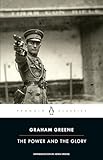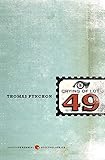
 In a recent Bookforum essay, Natasha Vargas-Cooper argues that we should stop teaching novels to teenagers because she hated reading novels as a teenager. Her first example is The Sun Also Rises by Ernest Hemingway. It took her a decade to understand Jake Barnes’s condition because she, “like most high school sophomores, had no frame of reference to tap into the heady though subtle emotions that course through Hemingway’s novels.” She found Jake and company boring. She was a “hungry” teenager “starving for stimuli,” so “trout fishing in Spain did not cut it.” Hemingway wasn’t the only snore. Add F. Scott Fitzgerald, along with the “damnable Brontë sisters [who] were shoved down my throat.” She traded Bless Me, Ultima for mediums that were more “vital and urgent,” like “movies, musicals, and plays.” Those visual narratives “gave me large and instant rewards for spending time with them.”
In a recent Bookforum essay, Natasha Vargas-Cooper argues that we should stop teaching novels to teenagers because she hated reading novels as a teenager. Her first example is The Sun Also Rises by Ernest Hemingway. It took her a decade to understand Jake Barnes’s condition because she, “like most high school sophomores, had no frame of reference to tap into the heady though subtle emotions that course through Hemingway’s novels.” She found Jake and company boring. She was a “hungry” teenager “starving for stimuli,” so “trout fishing in Spain did not cut it.” Hemingway wasn’t the only snore. Add F. Scott Fitzgerald, along with the “damnable Brontë sisters [who] were shoved down my throat.” She traded Bless Me, Ultima for mediums that were more “vital and urgent,” like “movies, musicals, and plays.” Those visual narratives “gave me large and instant rewards for spending time with them.”
The real villains were not stodgy novels, but her public school teachers. “Brutally inept teaching of The Pearl” almost soured her on Steinbeck. Most of her teachers “were as inspiring and provocative as the Great Expectations Word Search they handout out the first day we started Dickens.” Those teachers were “largely well-intentioned adults who don’t have the resources, or sometimes even the intellectual vigor, to make emotional landscapes of the western front, nineteenth-century London, or Pamplona very real to sixteen-year-olds.” In the hands of these insipid instructors, novels weren’t “the best device for transmitting ideas, grand themes, to hormonal, boisterous, easily distracted, immature teenagers.” Her proposed solution: students should read non-fiction.
Her potential reading list includes memoirs, creative non-fiction essays, meditations on language, and journalism. It’s a good list, but the problem is that Vargas-Cooper thinks she’s discovered the groundbreaking secret “to spark a love of reading, engage a young mind, and maybe even teach them how to write in a coherent manner.” Non-educators who write about education often make breathless suggestions that have already been used in the classroom for decades. Many of the writers and works who appear on Vargas-Cooper’s list are commonly taught in high school classrooms, and are suggested as independent reading selections for summer work: David Foster Wallace, Joan Didion, Hunter S. Thompson, George Orwell, Jon Krakauer, Malcolm X, James Baldwin, and others. Here’s a small sample of non-fiction from my own classroom: Wallace’s “Shipping Out,” “The Essay Vanishes” by Ander Monson, “Listening for Silence” by Mark Slouka, “How to Make Collard Greens” by Megan Mayhew Bergman, excerpts from The Liars’ Club by Mary Karr, and essays from Brevity.
Like many sweeping proclamations about high school education by those who have never done the actual work of guiding and caring for a classroom of students, Vargas-Cooper’s essay doesn’t pass scrutiny at the line-level. She wants the same supposedly banal educators she attacks earlier in the essay to now teach Wallace’s “Consider the Lobster” and Slouching Toward Bethlehem by Joan Didion. She then follows with a confounding sentence tandem: “Maybe the classroom is not the best setting for children to have profound literary experiences. Give the kids something they can relate to, immerse themselves in, and even copy!” I assume this means that teachers should give students non-fiction, but this transfer and experience must not happen within a classroom. Even parodic prose needs clarity.
Although I remain befuddled by her unawareness of high school reading lists, I am not surprised that Vargas-Cooper chose to begin her complaint with Hemingway, a writer often reduced to his myths. The Sun Also Rises is particularly well suited to misreading because of its unreliable, love-drunk narrator, Jake Barnes. Many of my own students have enjoyed Hemingway’s novel. I don’t say all, because no one other than a first-day teacher—or writers of thin commentaries on education—expects all students to enjoy every assignment, or even to read every book. But if Vargas-Cooper is looking for a “thought-provoking excursion into themes of empathy, human responsibility, and folly,” Hemingway delivers. I’m fairly certain that a novel about a man in love with a woman who would rather just be friends might connect with a teenage audience.
Students also enjoy The Power and the Glory by Graham Greene, a literary thriller suffused with theological complexities. An unnamed “whiskey priest” is on the run in 1930s Mexico after a regime based on the real-life governance of Tomás Garrido Canabal has outlawed Catholicism. Priests can either forsake their religion, or die. The whiskey priest chooses faith, but that faith is tempered by pride. He is no exemplary priest; in fact, he is a terrible man. He has abandoned the daughter he fathered out of wedlock. Anyone in his presence is in danger of arrest or execution. Another unnamed character, the lieutenant, considers the whiskey priest a symbol of all that is evil within the Church: gluttony and hypocrisy. The lieutenant wants to eradicate all vestiges of Catholicism, and he will use all means necessary.
I teach at a public school, not a parochial school. Most of my students have a vague cultural knowledge of Catholicism, but they are a world away from the Mexican province of Tabasco. Some students miss the double meaning of “father.” Others don’t understand why the villagers would risk death to receive the sacrament of confession. And others still will not read the book at all, either because of disinterest, or because they are overwhelmed with other classes and commitments. But I do not want to live or teach in a country that asks students to only engage experiences similar to their own. I look to create comfortable dissonance in the classroom. I want my students to recognize that they are geographically and culturally different than the characters in Greene’s novel, and then to consider their shared humanity with these fictional characters. I ask them to do the same with the Bundrens in William Faulkner’s As I Lay Dying, or with Oedipa Maas in Thomas Pynchon’s The Crying of Lot 49. They spend a season with the brilliant, maniacal football team at Logos College in Don DeLillo’s End Zone. And I pray that they will never know pain equal to the men and women in Toni Morrison’s Beloved, but they benefit from seeing the world through such scarred eyes.
We should continue to teach novels in the high school classroom. Fiction has a home there. But we should stop writing fiction about high school teachers within essays about education. Vargas-Cooper’s ribbing is playful compared to the stereotypes cast by politicians who hope to siphon funding from education. Teachers don’t enter this profession to relax. Teachers are women and men who work themselves exhausted.
Let me be clear: we public school teachers are not martyrs. We get paid for what we do. Whether that pay is acceptable or not is for another discussion. In America, teachers are either seen as angelic or caustic, saviors or sycophants. These stereotypes enable politicians to convince the public to support the latest education fad or slash needed budgets. The reality is we teach because we love to help kids, and we think literature is a way to examine and understand our complex lives. We do our best to help students inhabit the world of novels. The worlds of those texts might be imagined, but the emotions are palpable and authentic. We do real work in public schools. That, I can assure you, is not fiction.
Image credit: Flickr/mujitra.

















